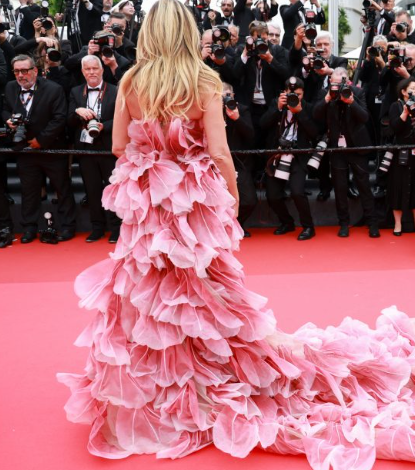Cannes 2025: A New Era for Fashion at the Festival

For almost 80 years, the Cannes Film Festival has been an iconic cultural event, not just celebrating cinema, but also serving as one of the world’s most glamorous showcases for fashion. Celebrities attending the event have always used the red carpet to make bold fashion statements, with designers eager to debut extravagant gowns, sharp suits, and avant-garde creations. However, the festival’s dress code for 2025 has undergone a significant transformation, reshaping how fashion will be expressed on one of the most visible global stages.
The updated dress code emphasizes modesty and practicality, marking a departure from the festival’s previous leniency. The most striking change is the introduction of a ban on outfits that mimic nudity. While Cannes has historically been more flexible—allowing women to wear flats instead of heels and embracing gender-fluid attire—this new rule signals a shift in the direction of the festival. The decision aligns with French legal standards for public decency and addresses the growing debate about what is considered tasteful in high-profile public settings. In recent years, red carpet fashion has become increasingly daring, with sheer dresses, dramatic cut-outs, and barely-there ensembles taking center stage. The new guidelines suggest that the pendulum may have swung too far.
Equally significant is the restriction on oversized, voluminous garments. Large dresses with long trains, which have historically created a dramatic visual impact, are now deemed problematic due to practical concerns—such as obstructing seating and presenting safety risks. While this may seem like a logistical matter, it has creative implications as well. For designers, the new limitations signal the end of certain design techniques that rely on dramatic, larger-than-life silhouettes. The days of extravagant princess-style couture could be over—at least for the Cannes red carpet. Guests who fail to adhere to the dress code may be barred from the event entirely, underscoring the seriousness of these changes.
For fashion designers, these new restrictions present both challenges and opportunities. Cannes has always been a space where designers could push boundaries, creating unforgettable moments on the red carpet. But now, with a shift toward modesty and restraint, designers will need to rethink how to make a statement without relying on shock value or extreme volume.
Rather than seeing these changes as a setback, designers may view them as an invitation to evolve. The 2025 dress code aligns with larger cultural shifts, particularly the growing focus on sustainable fashion. The fashion industry and consumers alike are becoming more conscious of the environmental and ethical impact of fast fashion. The limitations at Cannes might encourage designers to create pieces that are versatile, durable, and crafted from eco-friendly materials. Instead of designing garments meant for a one-time red carpet appearance, they may turn to designs that are reusable and sustainably made.
Furthermore, the emphasis on modesty invites designers to reconsider elegance from a more refined perspective. With less focus on revealing skin or creating massive silhouettes, the emphasis will likely shift to craftsmanship—tailoring, luxurious fabrics, and carefully considered details. This could signal a return to a more classic and timeless approach to glamour, celebrating beauty through subtlety and precision.
Additionally, Cannes’ move toward modesty may open the door for more inclusive fashion that reflects diverse cultural values. Modesty doesn’t have to limit creativity; it can broaden it. Designers could draw inspiration from a variety of global traditions that prioritize covered silhouettes, layering, and intricate adornments. This could result in more inclusive representation on the red carpet and allow fashion houses to explore new creative horizons. With issues of identity and global representation becoming more central to the conversation in the arts, Cannes’ new approach may represent a deeper understanding of its role as a cultural leader.
There will, of course, be critics. Some may argue that these changes stifle creativity or represent a return to outdated norms. But history has shown that fashion often flourishes in response to constraints. Many of the most iconic styles have emerged when designers were challenged by social or institutional restrictions. In many ways, designers are storytellers, and the 2025 dress code offers them a new framework to express their narratives.
Cannes’ updated dress code isn’t just a cosmetic change; it represents a cultural shift. By prohibiting outfits that mimic nudity and placing limits on oversized designs, the festival has challenged designers to think more carefully about form, function, and the message their creations convey. Flashy, daring fashion may no longer be enough—designers will need to be thoughtful, respectful, and innovative.
Fashion is never static—it is always evolving, responding to new ideas, and reinventing itself. As Cannes reshapes its expectations, designers are presented with a unique opportunity: to create fashion that transcends spectacle and speaks to something deeper. The 2025 red carpet may look different, but in that difference lies the future of fashion.





